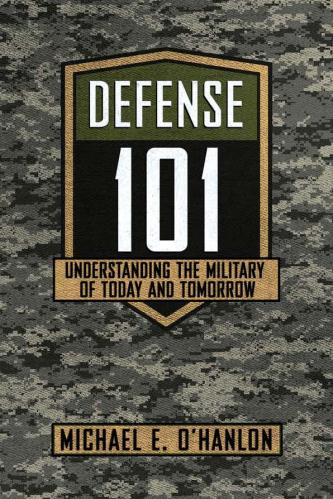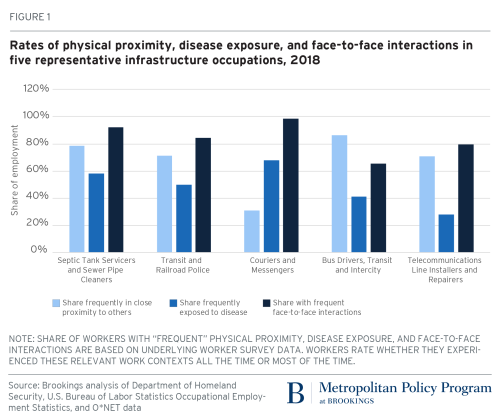Following President Trump’s mid-March declaration that the COVID-19 outbreak constituted a “national emergency,” the Department of Defense (DoD) moved swiftly to implement travel restrictions for DoD employees intended to “preserve force readiness, limit the continuing spread of the virus, and preserve the health and welfare” of military service members, their families and DoD civilians. In practical terms, this means that all military travel, to include permanent changes of station (PCS) or reassignments, are placed on hold until May 11, with few exceptions.
These travel restrictions — or “stop-movement” orders — coupled with DoD’s health protection guidance that encourages social distancing wherever possible, serve the important function of preserving the health and welfare of the force, which is itself a critical component of readiness. However, what might the extension of these practices and other force protection measures have on preserving force readiness, especially if the COVID-19 crisis pushes through the summer months — the time period during which most military moves occur?
It is far too early to assess the impact, if any, of either COVID-19 or DoD’s prudent force protection measures on overall force readiness. Still there are obvious challenges to maintaining readiness the longer individual and collective training exercises are cancelled, curtailed, or otherwise modified beyond their intended purpose.
One way to perhaps reduce any potential future degradation in force readiness may be found in the logic of the “stop-movement” order itself.
As part of DoD’s broader effort to help “flatten the curve” of COVID-19 transmissions by restricting travel, the Army recently offered voluntary assignment extensions to soldiers who wish to remain in place, rather than PCS. Though these voluntary extensions are designed to “help mitigate the impact of the stop-movement order” and provide stability to military families, the extensions may offer benefits to the force that go well beyond military families.
To illustrate these benefits, soldiers are typically assigned to a unit for two to three years, during which they develop a deep understanding of that unit, their role within it and, importantly, how that unit operates or “trains to fight.” They become, in short, a member of a very cohesive team. As custodians of continuity and expertise within a unit, retaining in place select volunteers reduces the “costs” of integrating and then familiarizing newly assigned soldiers to the unit and its mission. If readiness ever became a concern, having a healthy population of these “veterans” or “old-timers” within units could help flatten the learning curve as units rebuild readiness.
However, voluntary extensions alone may not sufficiently hedge against possible readiness concerns. To avoid the obvious shortfalls inherent in voluntary extensions, military leaders may look to involuntary extensions as a way to more evenly balance critical skill sets and capabilities within and across units — all with an eye toward preserving force readiness. Apart from preserving unique talents and experience within formations, voluntary and involuntary extensions would also reduce the burden on a transportation system that is already dealing with a backlog of family movement requests.
Involuntary extensions are neither new nor necessarily controversial. In fact, most military units scheduled for an overseas deployment will place a moratorium on nearly all PCS moves and retirements for the express purpose of retaining in place the accrued talents each soldier brings to a unit’s overall readiness. Though Secretary of Defense Mark Esper was explicit during a recent town hall that such sweeping measures would be “very unlikely” and “a measure of last resort,” nothing prevents the Department of Defense or individual services from considering and implementing limited, targeted involuntary extensions.
Such a policy would require exceptions and exemptions, as the variety of units and individual considerations forbids a one-size-fits-all approach. Based on these considerations — from ongoing major training exercises and real-world deployments, to scheduled retirements and professional military schooling — policymakers would likely be inclined to limit involuntary extensions to only those deemed absolutely essential to preserving force readiness. As Secretary Esper noted, such “last resort” measures “would be very surgically focused.”
Of course, consideration or even implementation of such a measure does not necessarily mean that readiness has already suffered as a consequence of the COVID-19 crisis. As with other proactive steps the Department of Defense has taken to mitigate the effects of “stop-movement” while retaining lethality and capability across the services, involuntary extensions offer senior leaders the opportunity to hedge against uncertainty in an uncertain time.
As General Milley remarked during that same town hall: “The U.S. military is very, very capable to conduct whatever operations are necessary to defend the American people.” This capability is borne of intensive individual and collective training events, among other things, designed to build force readiness. And if readiness is ever threatened, we can expect proactive solutions from defense leaders to address it. Lest our allies or potential adversaries think otherwise, General Milley continued: “We are ready today, we’ll be ready tomorrow. And we will adapt ourselves to operating in a COVID-19 environment. We are already doing that.”








Commentary
Extending soldiers’ assignments may help the military maintain readiness
Defense during COVID-19
April 14, 2020